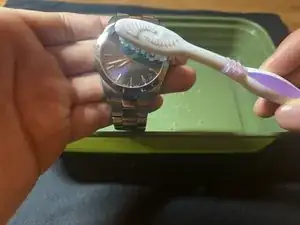
How to Fix Scratches on a Steel Watch
These are some common tools used to work on this device. You might not need every tool for every procedure.
Portable timepieces revolutionized convenience and human productivity. A descendent of the portable clock and pocket watch, the wristwatch has been around since the 16th century and, of course, has experienced numerous upgrades in strength, durability, and accuracy since its early appearances.
Wristwatches were originally seen as more of a decorative item and were usually only worn by women until the 20th century—which is, if nothing else, an interesting piece of trivia to add to your knowledge bank. The watch today has a much more functional purpose, always allowing the wearer to have the current time on hand (well, on wrist).
Watches today are either analog (made of mechanical gears and close relatives to the first wristwatches) or digital (utilizing an electronic display to show the time). Analog watches have numerous mechanical parts that interact to keep accurate time, so there are multiple reasons the watch might start ticking too slow, too fast, or not at all. For analog watches, lubrication can solve a lot of these problems, as well as individual part repair. Digital watches most commonly suffer from battery failure which, thankfully, can be cured by replacing the device’s battery.
Watches come in a wide range of shapes, colors, and materials, but all wristwatches have two staple components: time-displaying technology and a wristband.